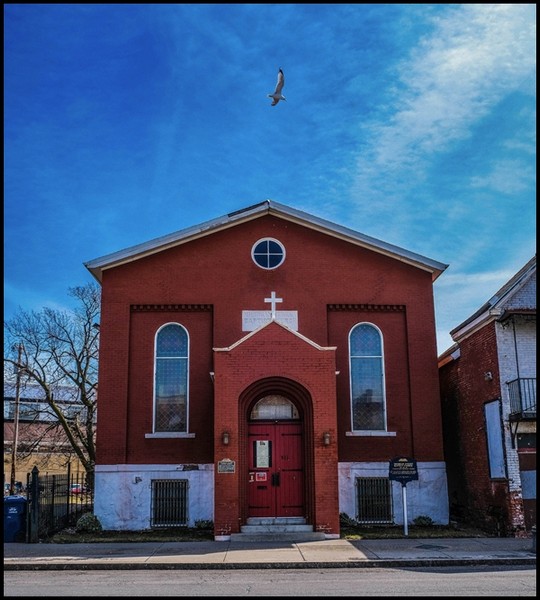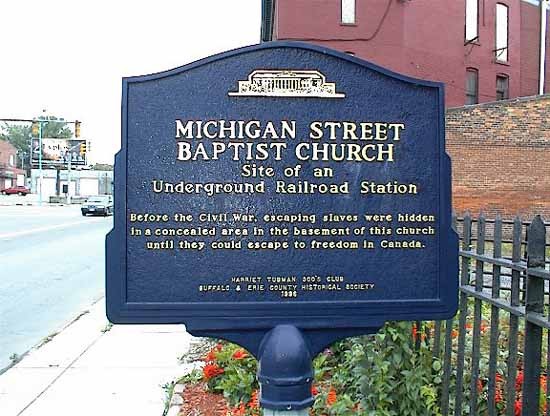Michigan Street Baptist Church
Introduction
Text-to-speech Audio
Built in 1845, the Michigan Street Baptist Church was a significant stop on the Underground Railroad. It was constructed by African Americans and remains one of the oldest properties in Buffalo continuously owned by African Americans. Because of its proximity to Canada, the church was often the last stop for escaped slaves as they made their way north to freedom, and numerous abolitionists visited the church in the mid-1800s. The congregation eventually moved to another location, and the building has changed hands several times over the years. The building was added to the National Register of Historic Places in 1974.
Images
Michigan Street Baptist Church

A historic marker at the church

Backstory and Context
Text-to-speech Audio
Michigan Street Baptist Church was constructed in 1845, although the church’s congregation is even older, originating in 1836. Then known as the Second Baptist Society, the congregation met in a brick schoolhouse on South Division Street. The result was the first Black church of any denomination in Buffalo, a city recognized in the 1840s by minister and abolitionist Charles B. Ray, as having an African American community that was “above any community of our people I have visited.”
The congregation worshipped for several years in a rented room above an undertaker as they saved to build their own church. The pastor at the time, Rev. Sharpe, even traveled to England to raise funds for the church but met with little success. By 1844, however, the congregation had raised enough funds that they began construction of their church, and their then-pastor, Rev. Samuel H. Davis, who was also a mason, did much of the work himself.
By the late 1840s, the church and its congregation were significant players on the Underground Railroad. Runaway slaves were hidden in the church’s basement before being ferried across the Niagara River to freedom in Canada. Both Buffalo and the Michigan Street Baptist Church became well-known in the abolitionist community, with numerous well-known abolitionists spoke at the church, including Henry Bibb, William Wells Brown, and Frederick Douglass.
The church’s membership peaked at 94 in the mid-nineteenth century, and for much of the second half of the century, its membership would decline. Some of the wealthiest members left and went to California during the Gold Rush, the founding members died, and younger people were not replacing them. The church experienced a period of marked growth during the 1920s, however, when the Great Migration increased Buffalo’s African American population. During that time, the church grew from a few members to more than 500. One of the church’s well-known members during this time was Mary Burnett Talbert, who was instrumental in the founding of the Niagara Movement, a precursor to the NAACP.
In 1962, the congregation purchased the Humboldt Parkway Methodist Church and moved. Macedonia Baptist Church bought the building on Michigan Avenue and continued worshipping there until 1975, when it was sold to El Bethel Assembly. Currently, the building is home to the Light of the World Mission. It is listed on the National Register for Historic Places and is operated and maintained by the Buffalo Niagara Freedom Station Coalition.
Sources
The Michigan Street Baptist Church (Buffalo, NY) is Founded , African American Registry . Accessed January 18th 2022. https://aaregistry.org/story/the-michigan-street-baptist-church-a-buffalo-ny-landmark/.
Michigan Street Baptist Church, Visit Buffalo Niagara. Accessed January 18th 2022. https://www.visitbuffaloniagara.com/businesses/michigan-street-baptist-church/.
The History of the Michigan Street Baptist Church , Michigan Street Baptist Church . Accessed January 18th 2022. https://www.michiganstreetbaptistchurch.org/history.
